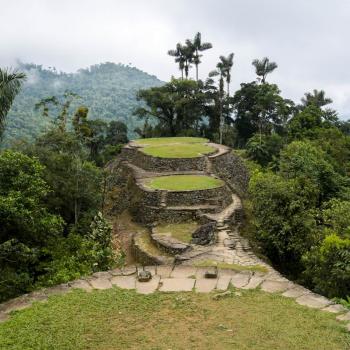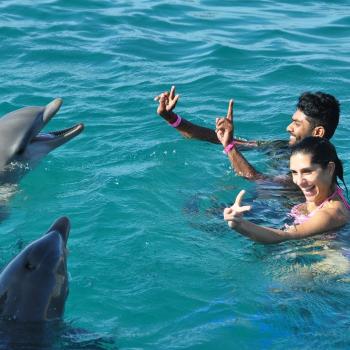With lush jungle clad mountains topped by glaciers, wild bays framed by enormous boulders, remote islands encircled by a sea of seven colors and towering red sand dunes caressed by gentle turquoise waters, the landscapes of the Greater Colombian Caribbean are so diverse it’s difficult to believe that they can be visited in just one place.
Ripe for relaxation, this enchanting land of welcoming warm waters, pristine reefs and spectacular soft-sand beaches is the country’s premier place to unwind. But the Greater Colombian Caribbean is so much more than just sun and sand.
The region is home to fascinating traditional cultures; from the peaceful guardians of the Sierra Nevada mountains to laid-back island communities and the rich African heritage of the Palenqueros, the inhabitants of the Greater Colombian Caribbean are every bit as diverse as the breathtaking landscapes.
And those visitors that manage to prize themselves away from the sun loungers and silky sands are rewarded with astounding archaeological sites, magical literary traditions, vibrant festivals and perhaps the most charming colonial city in the Americas, all backed a soundtrack of home-grown styles of music that capture the joy of the Caribbean .
Housing the highest peak in the country, the oldest continually inhabited European settlement on the continent and northernmost point of South America, the Greater Colombian Caribbean is a land of superlatives with unrivaled opportunities for discovery.
In a region famed for its beaches, perhaps it might surprise some that the Greater Colombian Caribbean’s biggest drawcard is not an idyllic stretch of sand but a city. But then again, Cartagena is not just any city. Its perfectly preserved old town is one of the finest examples of colonial architecture anywhere. Enclosed by imposing stone walls overlooking the waters of the Caribbean, its colorful center is a romantic portal to another era.
Just offshore from Cartagena, the peninsula of Barú and the Islas Rosarios are fronted by white sand beaches and tranquil clear waters perfect for snorkeling or just relaxing in the sun. Less visited but every bit as spectacular, the San Bernardo Archipelago offers more bucolic islands to indulge in shipwreck fantasies. Back on the mainland, nearby San Antero and Rincon del Mar are famed for their shimmering transparent waters.
And if white sands and brilliant hues of translucent waters are a priority, don’t miss San Andrés, Providencia and Santa Catalina. Located hundreds of kilometers from the mainland in the middle of the western Caribbean, these remote island getaways enthrall visitors with their distinctive language, traditions and cuisine.
For those travelers prefer plenty of nature with their beach experience, the extraordinary Tayrona National Park offers it all: wild boulder-strewn beaches lined by palm trees, fine white sands, clear waters, dense vegetation and archaeological ruins all backed by the rugged beauty of the Sierra Nevada mountain range. It’s little wonder it considered a sacred place by local indigenous groups.
More enticing beach and nature combinations can be found at the small towns of Capurganá,
Sapzurro and Triganá in the Urabá Gulf which are nestled in gorgeous mountain-backed bays surrounded by thick jungle.
For a totally different beach experience, the striking desert lands of the Guajira peninsula are one of a kind. Here the earthy tones of the towering sand dunes, hills and cliffs are in permanent contrast with the brilliant turquoise waters of the Caribbean below and the local indigenous Wayúu inhabitants, who welcome visitors into their homes, are just as extraordinary.
In the lower Guajira, Palomino is a little beachside village with a bohemian ambience that draws crowds of likeminded travelers to its many hotels and hostels specializing in wellness and relaxation.
But it’s not necessary to be a beach fanatic to fully enjoy the Greater Colombian Caribbean. Nature-minded visitors - or those who have had too much sun - will find the Sierra Nevada mountains to be the perfect place to cool off. In the foothills of this range, the sleepy garden town of Minca offers birdwatching, refreshing rivers, and hikes through old-growth forest. Other first class birdwatching can be found on among the swamps of Isla Salamanca and the Santuario de Flora and Fauna Los Flamencos.
The higher reaches of the Sierra Nevada are topped with glaciers and are home to the indigenous Kogui, Wiwa, Arhuaco and Kankuamo communities who live in a state of harmony with nature much as they always have.
The Sierra Nevada also shelters Colombia’s most awe-inspiring pre-Hispanic site, the monumental stone platforms of the Ciudad Perdida, which is only accessible via en epic four-day hike through the jungle.
A slightly more modern lost city can be found further inland at Mompós, a once a thriving port on the Magdalena River that was left isolated by changes in the river’s flow and has been bypassed by modern development. Its sun-baked, time-worn streets are reminiscent of the scenes bought to life by Colombia’s greatest novelist, Gabriel Garcia Marquez, the father of magical realism who was born and bred in this region.
Like Mompós, the small town of Lorica also retains a great deal of its original ambience and traditional architecture. And then there is Santa Marta, the oldest living city founded by the Spanish, with its renovated historical center just a short drive from the beaches of Rodadero and the floating villages of Ciénaga.
In contrast, neighboring Barranquilla is the most modern city in the region and home to the coast’s biggest party, the Barranquilla Carnival - a colorful explosion of dance and music that brings the area’s rich cultural heritage out onto the streets.
And there’s plenty of heritage to celebrate. The fertile cultural landscape of the Greater Colombian Caribbean has given rise to some of the most loved styles of latin music. The accordion-based vallenato, which originates Valledupar on the far eastern side of the Sierra Nevada, has spread beyond the Caribbean to become hugely popular throughout Colombia and beyond while porro and cumbia, with their distinctive rhythms and folkloric dances, are also a product of the unique mix of indigenous, African and European influences in the region.
With so much to take in, it’s fortunate that the Greater Colombian Caribbean has numerous busy airports that make getting around the region straightforward. While many travelers fly in and out of Cartagena, the airport at Barranquilla also receives international flights while Santa Marta, Montería, Valledupar, Riohacha and other major cities in the region have regular services to Bogotá and other large cities.
San Andrés also receives some direct international flights in addition to regular flights to and from cities throughout Colombia.
By road, the main cities of the region are linked to the Eastern Colombian Andes via the Magdalena River highway while the eastern destinations of Montería and Urabá are connected to the Western Colombian Andes by two good mountain roads.













































